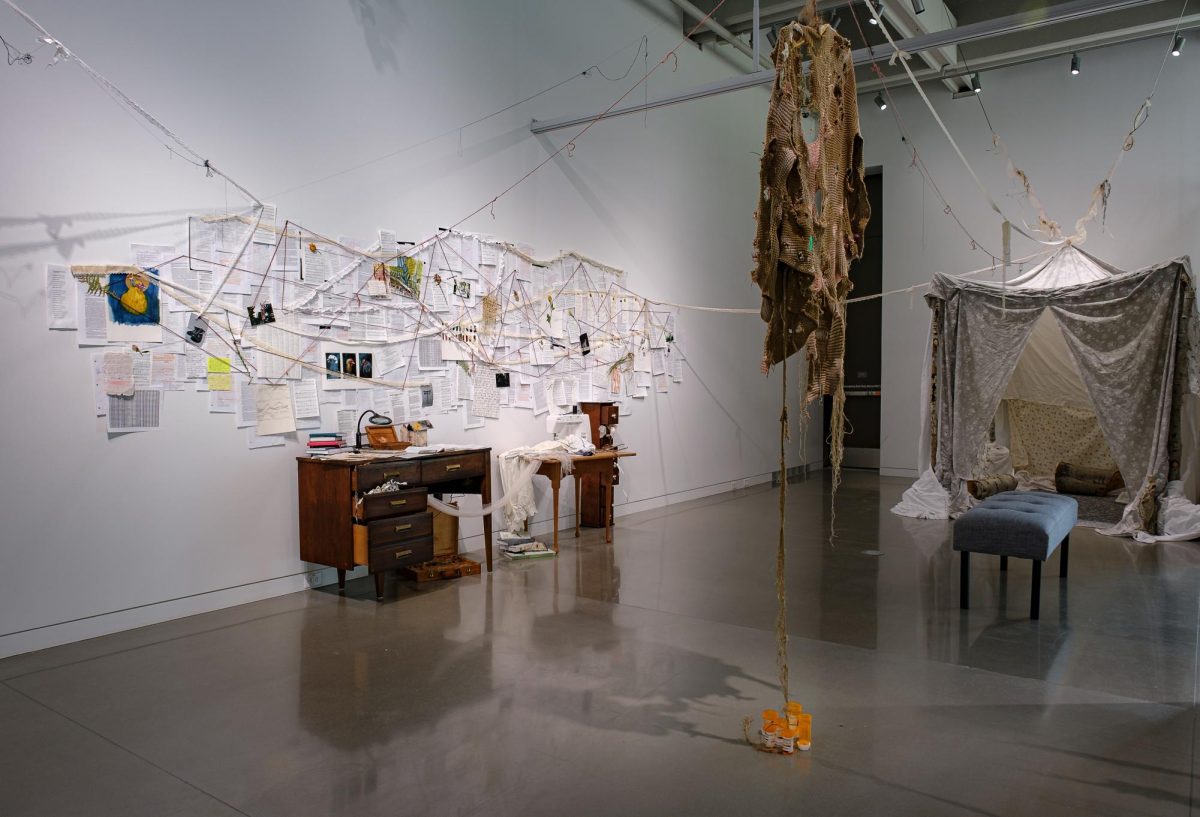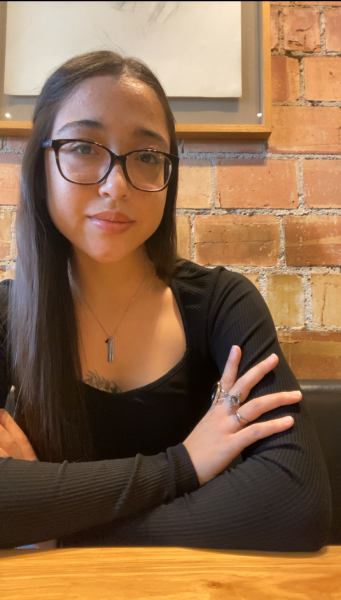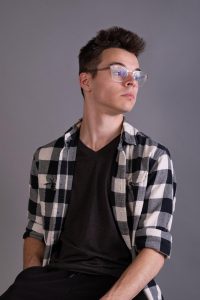Gittins Gallery is displaying “Reclaiming Eden” and “Woven Worlds,” the work of Master of Fine Arts students Sydney Porter Williams and Jes Booth. Both artists have created exhibits that inspire discussion and admiration — a collection of the lessons they’ve learned.
“The more you look, the more you will be rewarded” — Sydney Porter Williams
“Reclaiming Eden” is inspired by Williams’ upbringing in a controlling evangelical Christian church. Struggling with perfectionism in order to reach the promise of a dream, the promise of Eden, Williams finds herself pursuing it in external things. Citing her struggle with mental health, she realized that the promise of a dream was a lie and she would have to find that peace within herself.
Centering her work around the extremely sentimental place of her family’s garden, she uses branches from the trees in the garden throughout the exhibit. Finally finding that peace within herself, she built her own garden and reclaimed Eden.
Each piece is made up of a collection of Williams own personal artifacts, creating what she describes as “an externalization of my psyche.” Using furniture, tree branches, clothing, hand-written notes from family, annotations of essays and pages from a therapy workbook and journal-like entries, Williams builds a collage displaying the world how she sees it, giving the viewer an intimate look into her mind.
The piece “In Memoriam” displays a collection of her own personal prescription medication bottles in which she replaced the pills with candles, giving a sense of peace to the situation. Each piece of her exhibit is linked together by a series of strings, leading up to her unraveling in her piece “The Fall,” which leads to her reconciliation in “Awakening.”
While using extremely personal items creates an intimidating level of exposure, Williams keeps the truly intimate details hidden away.
“I’m just giving traces of myself, and that feels like protection,” she explained.
Although intimidating, the intimate exposure of herself to the viewer is the reason she created the exhibit. She said hopes to help others who have had similar experiences with mental illness of religious trauma to feel understood and to normalize conversation around the taboo topics.
Artist and fellow MFA student Maike Wells wants to encourage viewers to be open to learning.
“There’s so much to discover and look at,” she said. “Every time you read something you find something new.”
“Get as close as you can” — Jes Booth
Wells said her favorite piece of the exhibit “Woven Worlds” is “Aspis.” The craftsmanship will have you asking, “How did the artist create this?” A huge hanging structure that forms a canopy out of branches woven together and flowers falling down to the floor, Booth creates a magical, almost supernatural element to the natural world.
Creating over 400 pieces, Booth uses craft as a way to reconnect with the natural world. The wrapped and webbed structures of “Willow Wide Web” and the woven structures of “Nostalgic Nests” make the exhibit continuous, and almost make the walls of the gallery come to life. Creating spaces for viewers to immerse themselves, Booth built her own garden for people to find peace in.
Citing a study where steroids were injected into trees in order to promote growth, which led to their premature death, Booth started thinking about the sustainable ecosystem and the balance of the natural world. She said she hopes her exhibit will inspire people to slow down and find healing through the natural world.
“As humans, we constantly push ourselves too far, and push ourselves into these states of burnout that aren’t sustainable,” she said. “As we learn from nature, there’s a better balance we can have.”
Booth hopes people leave the exhibit wanting to engage more with the natural world, and take the time to appreciate what’s around them.
“I hope that people find the beauty in the natural world elements that I was initially drawn to,” she said.
Their exhibits will be displayed for the rest of the month, with each hosting an artist talk to further discuss their work.





